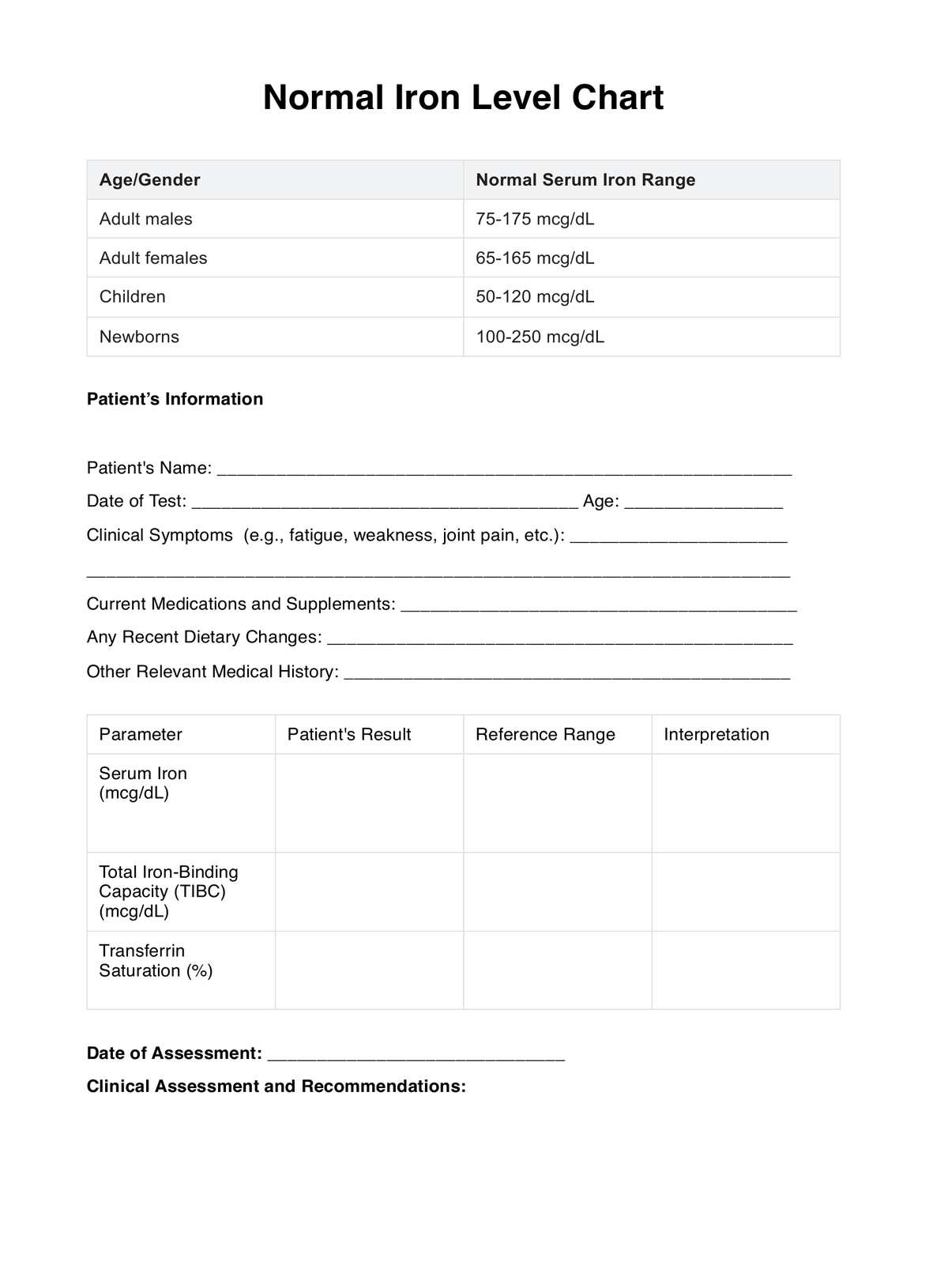Healthcare providers, including doctors, nurses, and specialists, typically request this when assessing a patient's iron status.

Normal Iron Level
Manage and interpret iron levels with ease using the Normal Iron Level Chart. It simplifies the assessment of iron status. Download now!
Use Template
Normal Iron Level Template
Commonly asked questions
These are used when healthcare professionals must evaluate a patient's iron levels, particularly in suspected anemia, iron deficiency, or iron overload.
These charts are used by entering patients' information, recording their test results, comparing them to reference ranges, and interpreting the data to assess their iron status.
EHR and practice management software
Get started for free
*No credit card required
Free
$0/usd
Unlimited clients
Telehealth
1GB of storage
Client portal text
Automated billing and online payments











